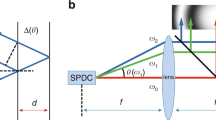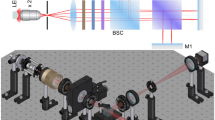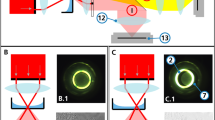Abstract
THE phase retardation provided by evaporated fluoride films on transparent plates, suggested by E. H. Linfoot1 as being of possible use in phase contrast microscopy, finds an important application in interferometry, where the phase-retarding areas have to be of much larger dimensions than are involved in phase contrast microscopy or applications of the Zernike test. It forms the basis of a method, developed here some time ago, of distinguishing between under-and over-correction of the aberrations corresponding to the pattern of interference fringes observed while using the Hilger lens-testing interferometer.
This is a preview of subscription content, access via your institution
Access options
Subscribe to this journal
Receive 51 print issues and online access
$199.00 per year
only $3.90 per issue
Buy this article
- Purchase on Springer Link
- Instant access to full article PDF
Prices may be subject to local taxes which are calculated during checkout
Similar content being viewed by others
References
Linfoot, E. H., Nature, 155, 76 (1945).
Author information
Authors and Affiliations
Rights and permissions
About this article
Cite this article
COX, A. Phase-retarding Areas. Nature 155, 425–426 (1945). https://doi.org/10.1038/155425a0
Issue Date:
DOI: https://doi.org/10.1038/155425a0
This article is cited by
-
Golgi Apparatus by Phase Contrast Microscopy
Nature (1946)
Comments
By submitting a comment you agree to abide by our Terms and Community Guidelines. If you find something abusive or that does not comply with our terms or guidelines please flag it as inappropriate.



